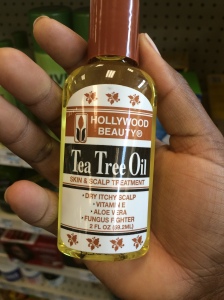Are the Oils You’re Using Helping or Hindering Your Hair?
Using oils is a popular part of a hair care regimen, but some oils don’t do what they’re supposed to do.
The first thing to know about oils is that they are not a moisturizer (you can read more of an explanation, here). With the exception of coconut oil, popular oils, whether carrier or essential, can only seal in moisture and add benefits like itch relieving, antifungal, etc.
Every oil has benefits that can help retain and/or restore health and moisture for hair, but depending on where you’re getting it from, the oil you believe you are purchasing, could be something else. Beauty supply stores supply popular “oils” that say they can be helpful for your hair, but in reality, the oil you purchase isn’t the pure oil that you actually want to purchase. These oils are usually cheaper, but with less money you’re spending, the less benefit you’re getting.
It’s very important to read the back of any products you buy (read the importance of reading ingredients, here.) Popular oil brands that you might be buying could possibly be a completely different oil with a little oil of the oil you actually want. For example, take a look at the ingredients of this popular tea tree oil that you can find at local beauty supplies and drugstores:
Click the pictures to enlarge
Now for a hair science breakdown:
As you can see, the first ingredient is soybean then tea tree oil, as well as other oils added. As you know, the first ingredient is what the product is mostly made of. Soybean oil is a carrier oil and tea tree oil is an essential oil. Essential oils need carriers in order to be used because these oils can be harmful to use by themselves. The problem with soybean oil as a carrier is that this oil is a polyunsaturated oil. Polyunsaturated oils have a hard time moving through hair’s cuticles which results as a harder time moisturizing them. Soybean oil sits on top of the hair shaft, and can block out other moisture. This oil can actually be used as a natural heat protectant when straightening hair. When straightening hair, especially curly hair, you want to avoid moisture from getting into your cuticles because this will cause straight hair to revert back to it’s curly state. If soybean oil is used to protect hair from moisture and heat for straightening, how is this oil helping the tea tree oil penetrate the strands to distribute its benefits? Soybean oil has it’s own benefits to hair, but in moderation.
This product is cheating you out of the benefits of tea tree oil but advertising on the front of their packaging that it will give you these benefits.
Now, let’s look at tea tree oil that you can buy at natural produce stores including Wholefoods, Trader Joe’s, Sprouts and local markets:
Click pictures to enlarge
As you can see, the only ingredient is tea tree oil. You will get all of the benefits of this oil because there is nothing added to it. You will need to add your own carrier in order to use it, but great news, the best carrier is the most accessible moisturizer, water. You can also mix it with other carrier oils, but be careful of which ones you’re using (a list of carrier oils can be found, here).
I used tea tree oil as an example because it is a very popular oil, especially for itch relief (click here for my DIY Itch Reliever recipe). Even though 100% oils are more expensive than the beauty supply and drugstore products that are usually mixed with different oils, if you’re finding that these products aren’t effective, it’s because the extra ingredients might be hindering the benefits you’re searching for.
For more information about the hair science of oils, you can read these articles:





Very true, pleaseee read ingredients before purchase, so important.
Smiles!!!